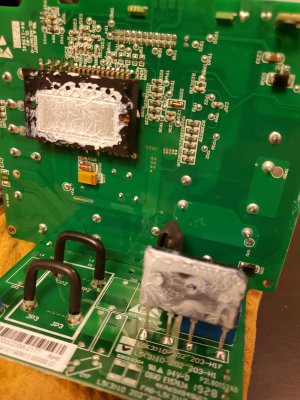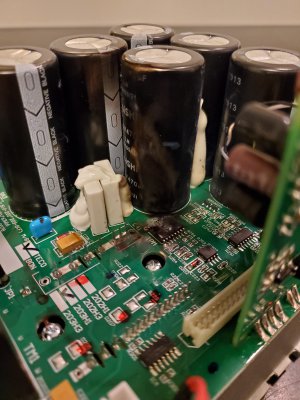(Posted in General Discussions since it relates mainly to safety).
I’ve been wiring and setting up a VFD for my new milling machine. (Lots more work than I anticipated).
I had done a little bench testing to dial in some of the settings. But it wasn’t until yesterday that I had the final wiring done from breaker box to motor, so I put the motor on a chair and rolled it over to the eventual site of the mill. The mill will be disassembled for a while, so I wasn’t going to fully check out the system under load, just a quick shakedown. Then disconnect the motor and shelve it again.
So I opened up the little electrical box on the motor that houses the terminal block and connected the power cable. Then because I am extremely clever, I recognized that I could save a ton of time and trouble by not closing up the little electrical box until after I ran my quick check and disconnected the cable. The little voice was there but I could barely hear it because I couldn’t be bothered to pay attention. What could go wrong?
Answer: a screwdriver could fall out of my shop apron as I hit the On switch and short across the motor leads. (Actually, many other things could have gone wrong, and I’m painfully aware that I was lucky. A VFD is expensive, but much cheaper than an ambulance ride or a funeral).
Anyway, loud pop, quick puff of smoke, and a few hundred bucks evaporated. (Unless the motor is also fried...)
So listen to the little voice, it’s on your side. And, what looks like a shortcut, isn’t.
I sent an email to Wolf Automation to see if they think it might be repairable, but I would think it’s a goner. If I opened it up to try to diagnose the damage, which parts would be the likely suspects?
I’ve been wiring and setting up a VFD for my new milling machine. (Lots more work than I anticipated).
I had done a little bench testing to dial in some of the settings. But it wasn’t until yesterday that I had the final wiring done from breaker box to motor, so I put the motor on a chair and rolled it over to the eventual site of the mill. The mill will be disassembled for a while, so I wasn’t going to fully check out the system under load, just a quick shakedown. Then disconnect the motor and shelve it again.
So I opened up the little electrical box on the motor that houses the terminal block and connected the power cable. Then because I am extremely clever, I recognized that I could save a ton of time and trouble by not closing up the little electrical box until after I ran my quick check and disconnected the cable. The little voice was there but I could barely hear it because I couldn’t be bothered to pay attention. What could go wrong?
Answer: a screwdriver could fall out of my shop apron as I hit the On switch and short across the motor leads. (Actually, many other things could have gone wrong, and I’m painfully aware that I was lucky. A VFD is expensive, but much cheaper than an ambulance ride or a funeral).
Anyway, loud pop, quick puff of smoke, and a few hundred bucks evaporated. (Unless the motor is also fried...)
So listen to the little voice, it’s on your side. And, what looks like a shortcut, isn’t.
I sent an email to Wolf Automation to see if they think it might be repairable, but I would think it’s a goner. If I opened it up to try to diagnose the damage, which parts would be the likely suspects?





